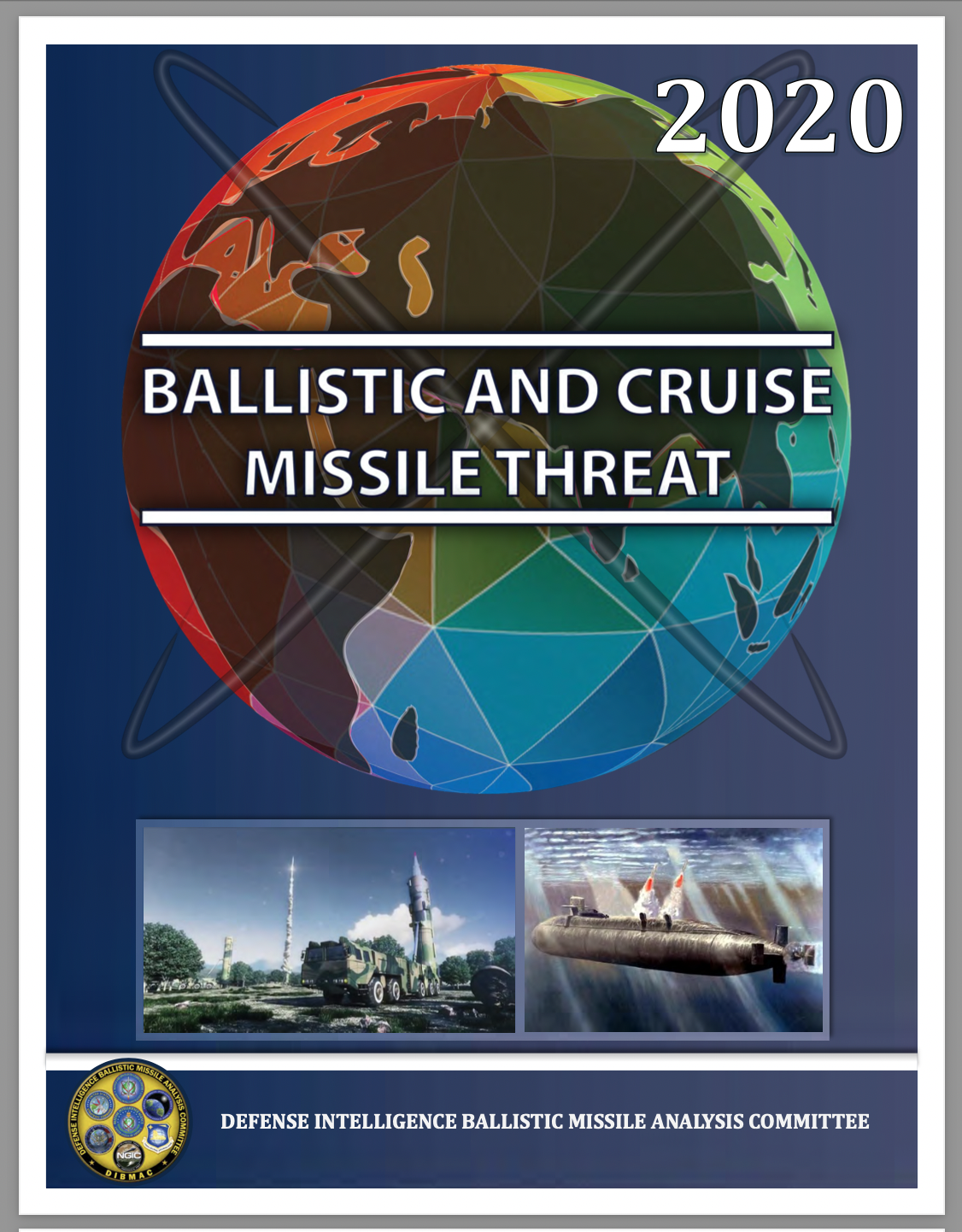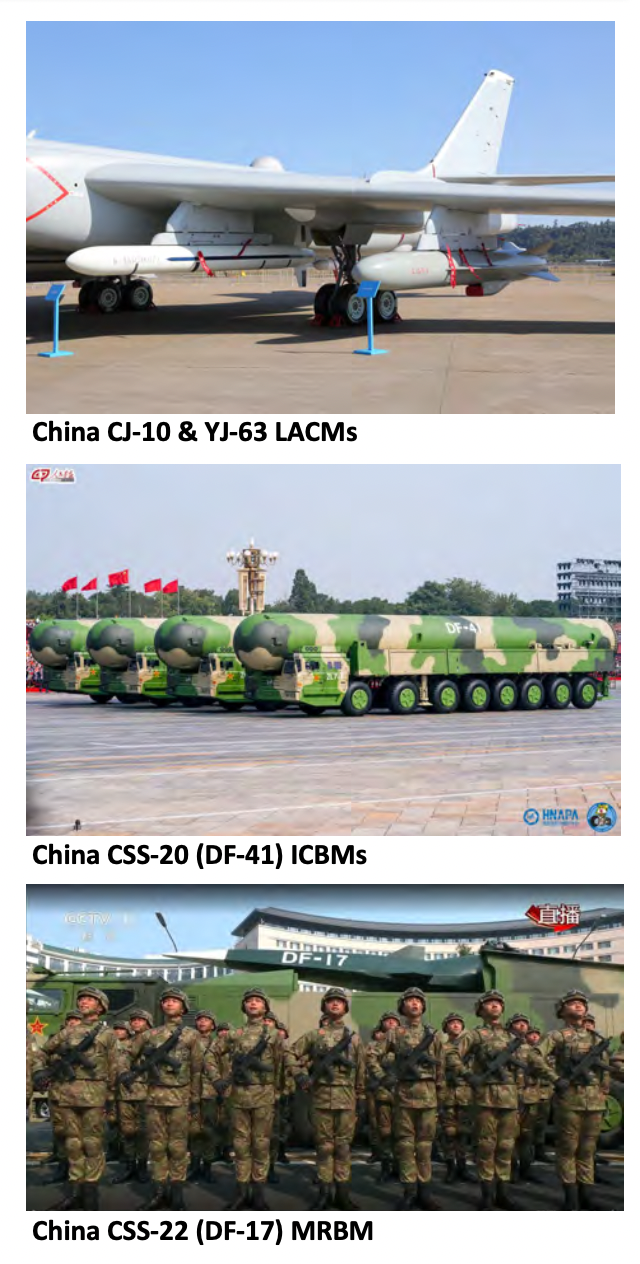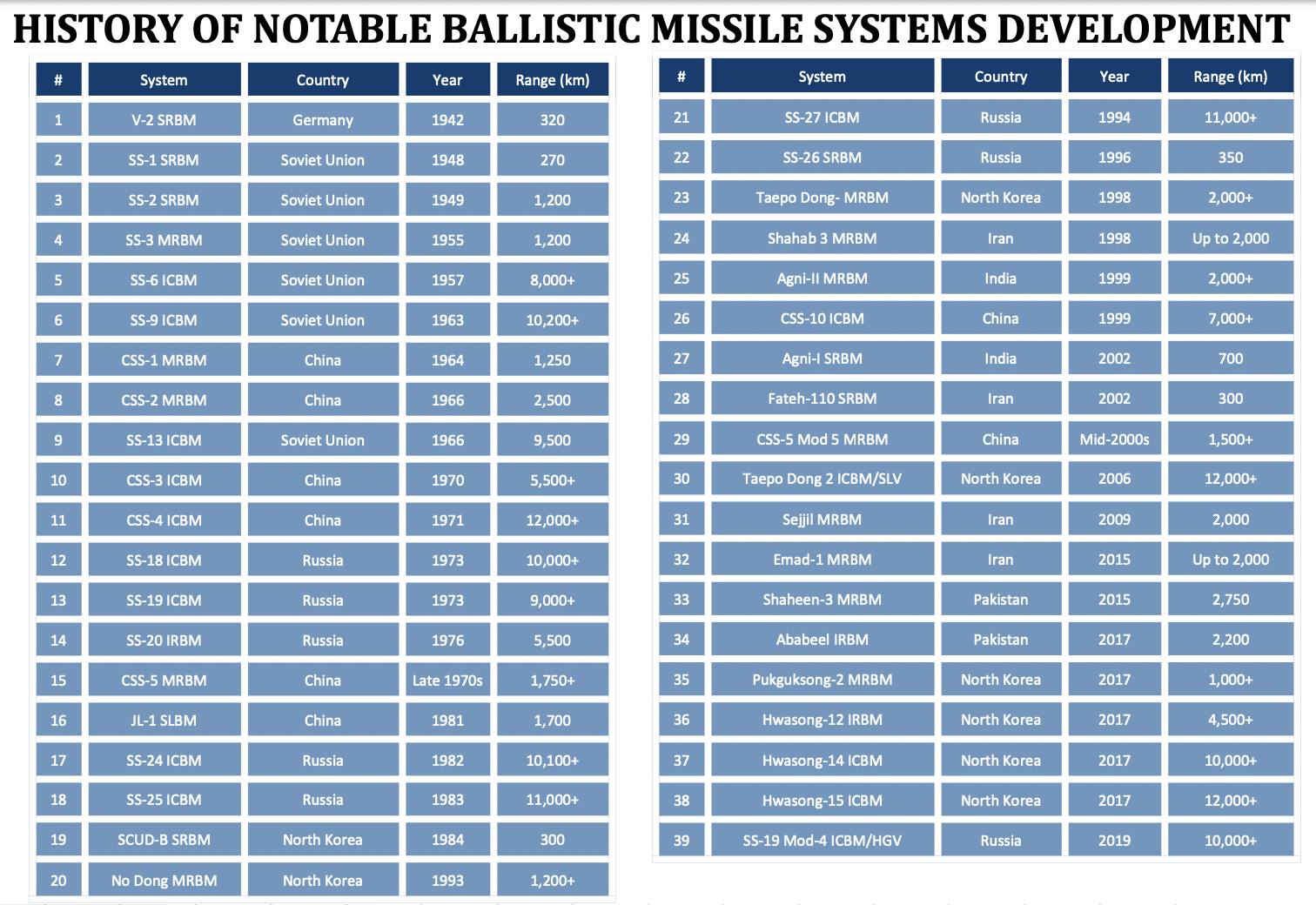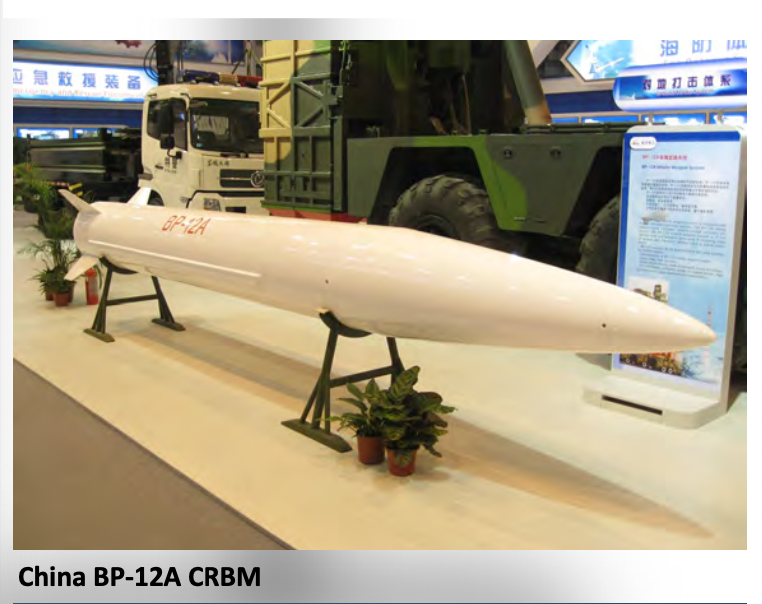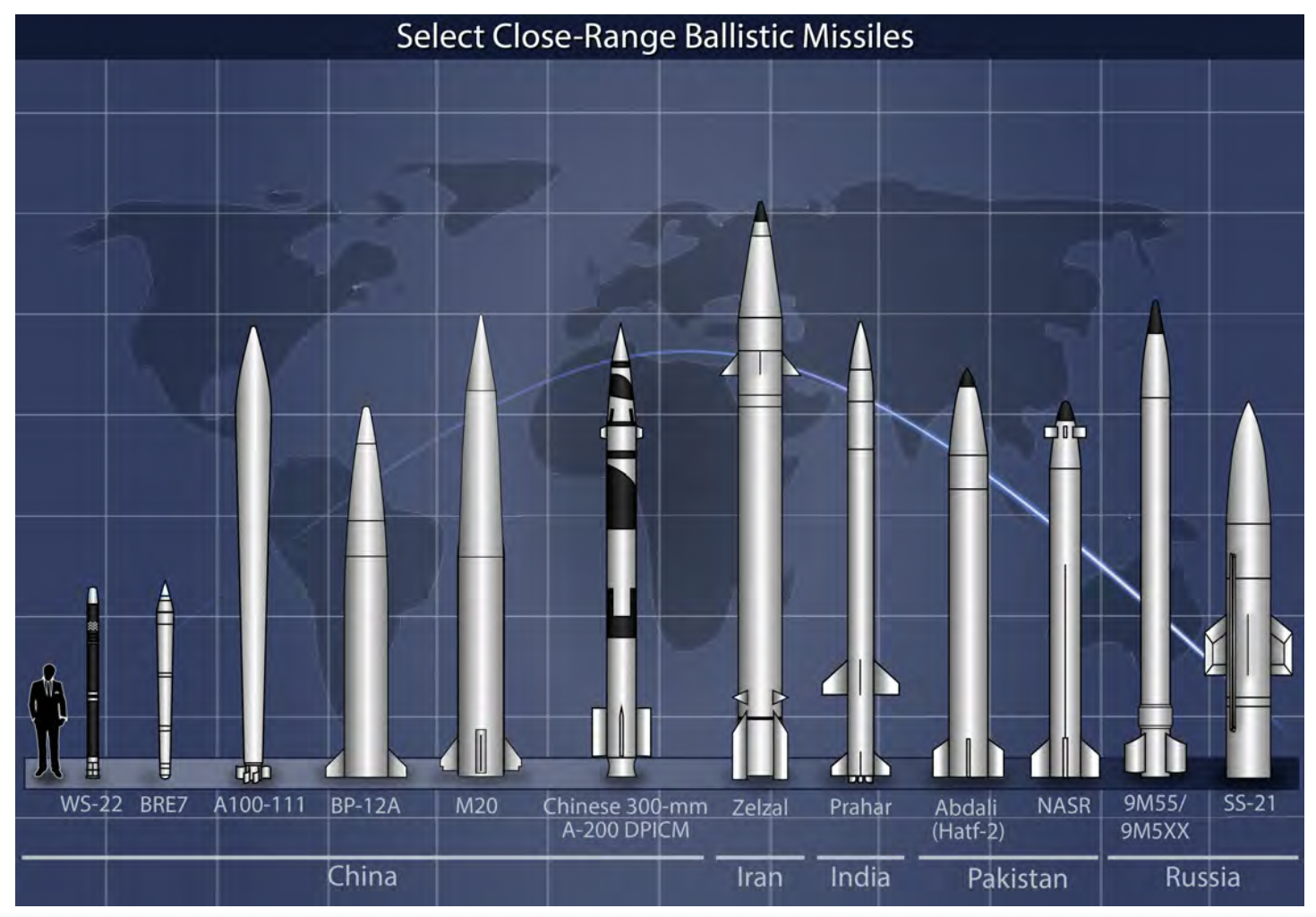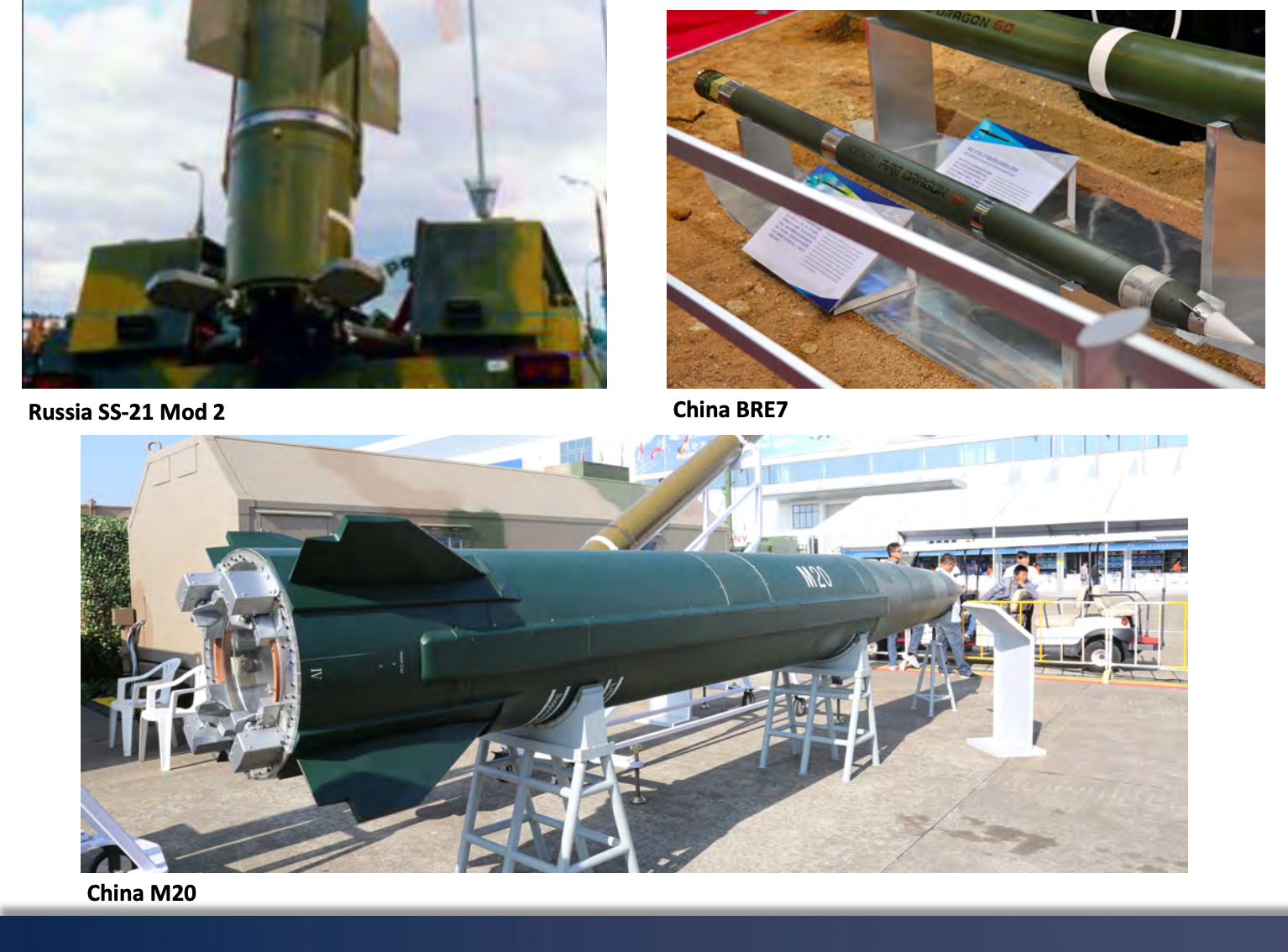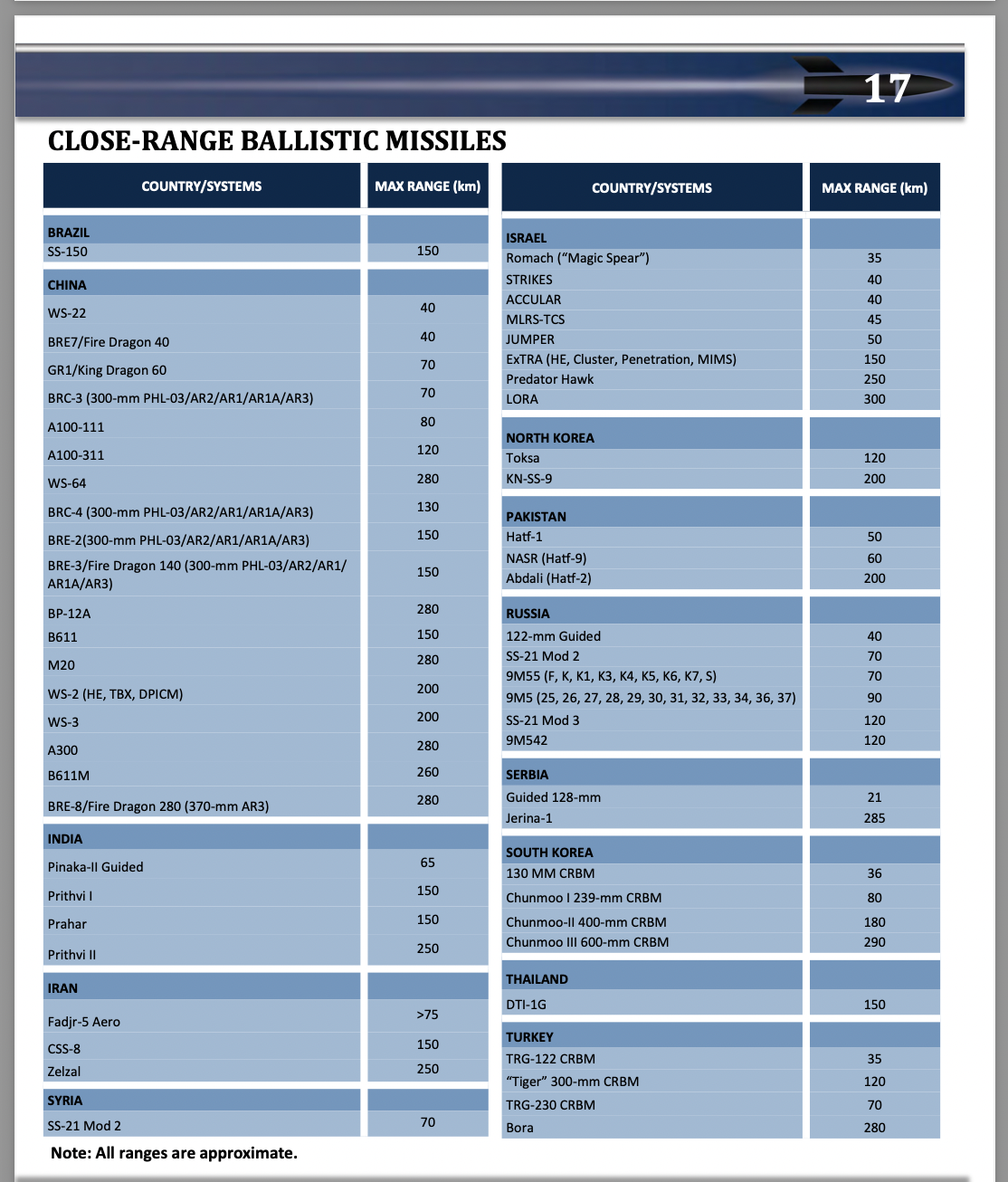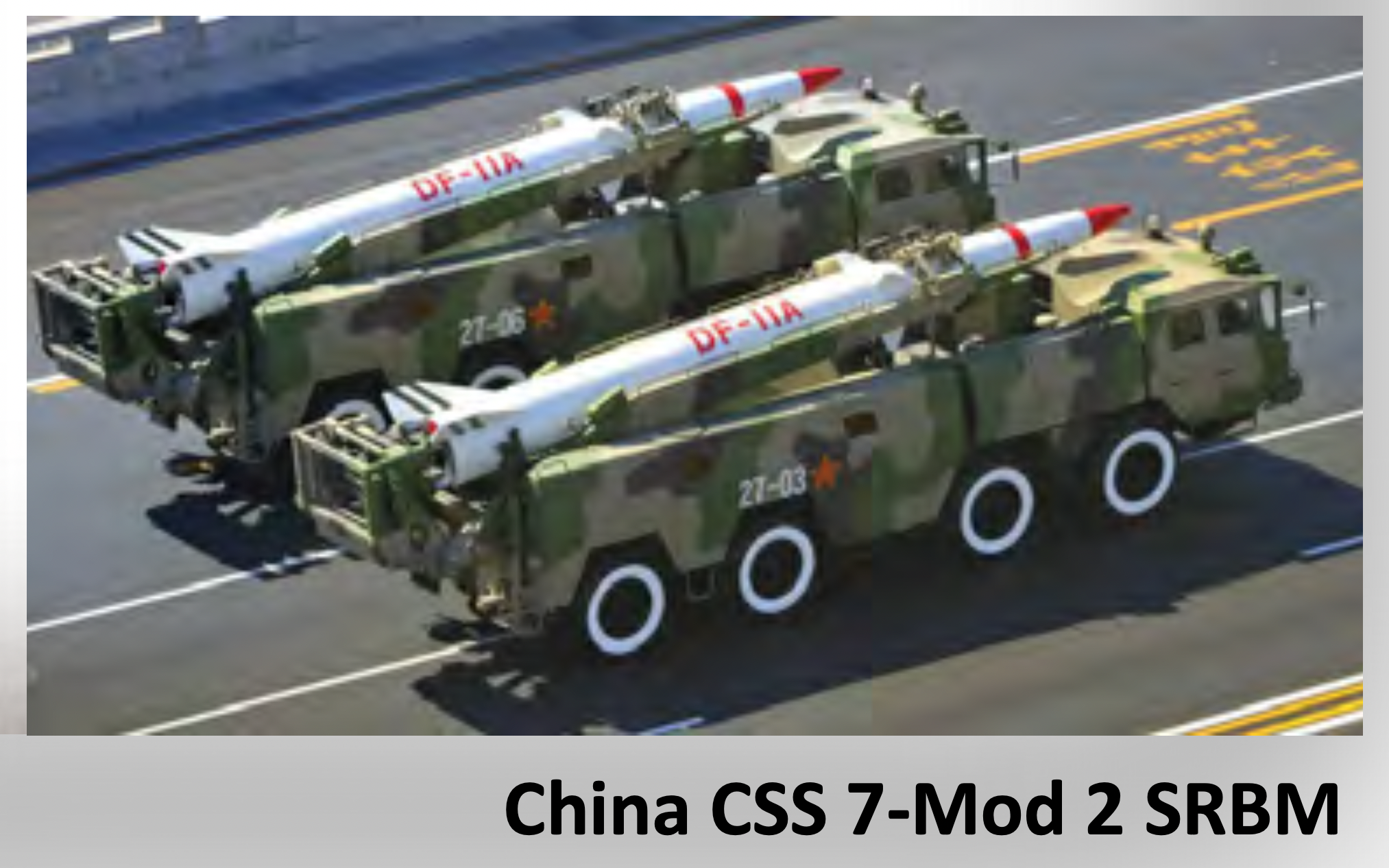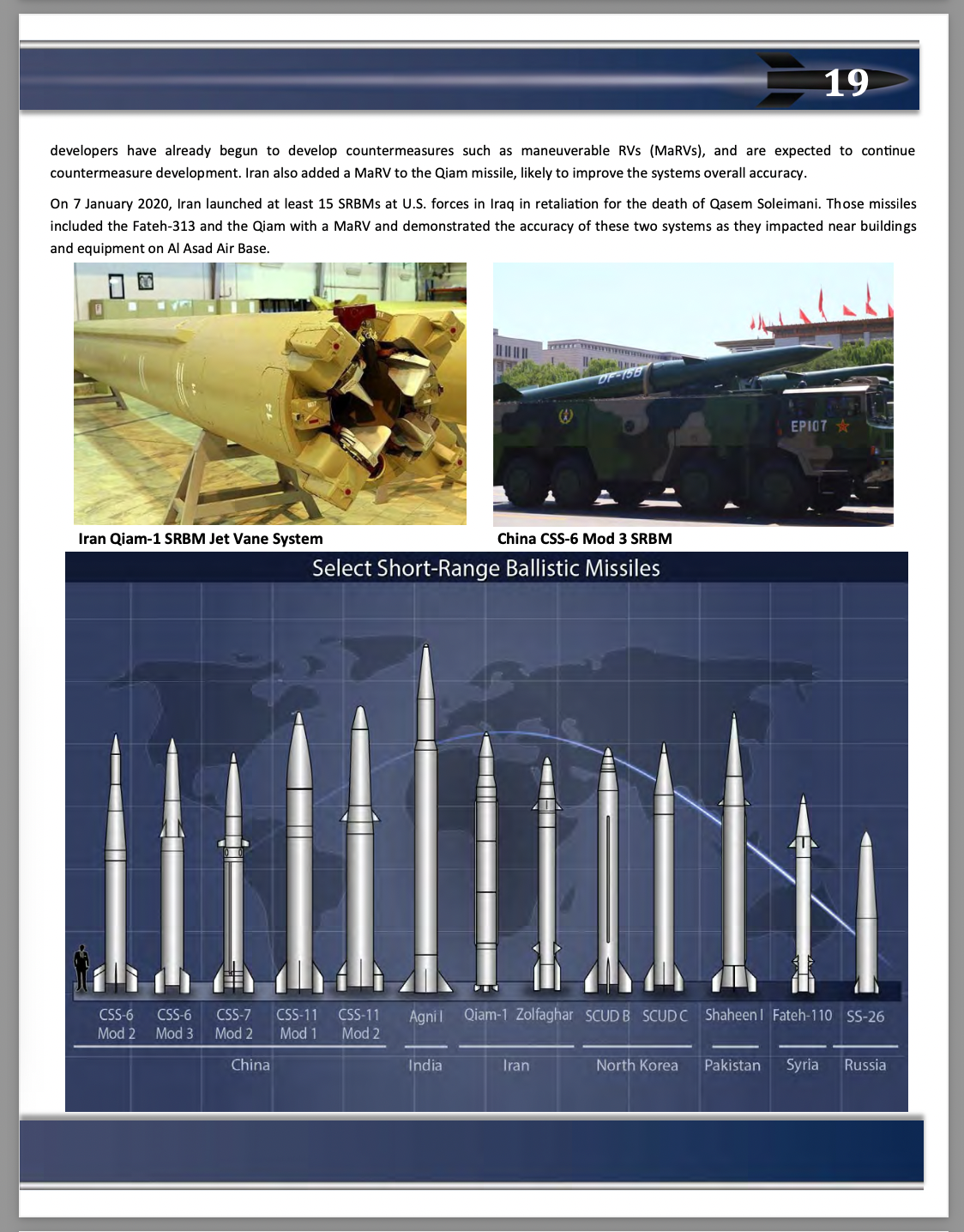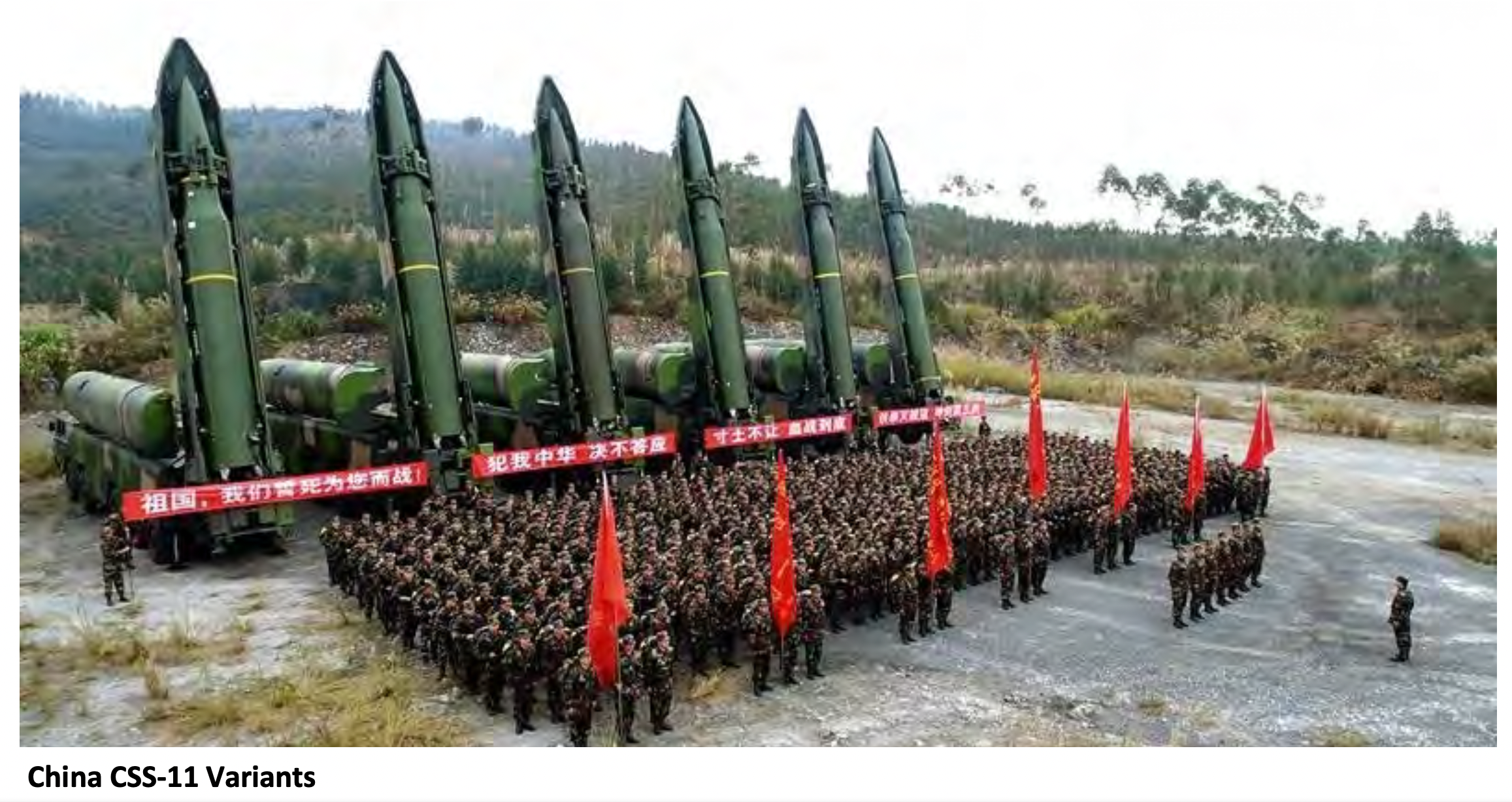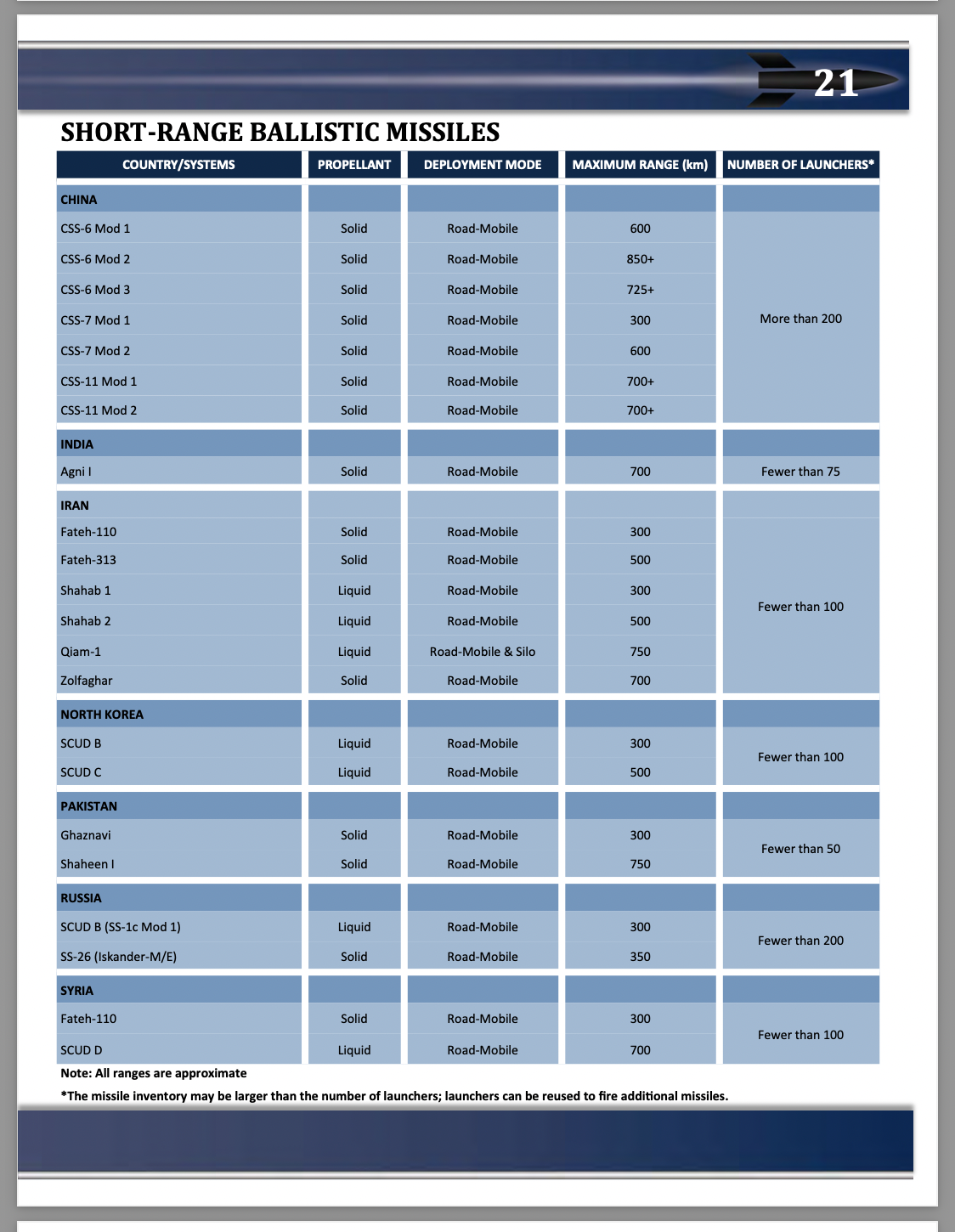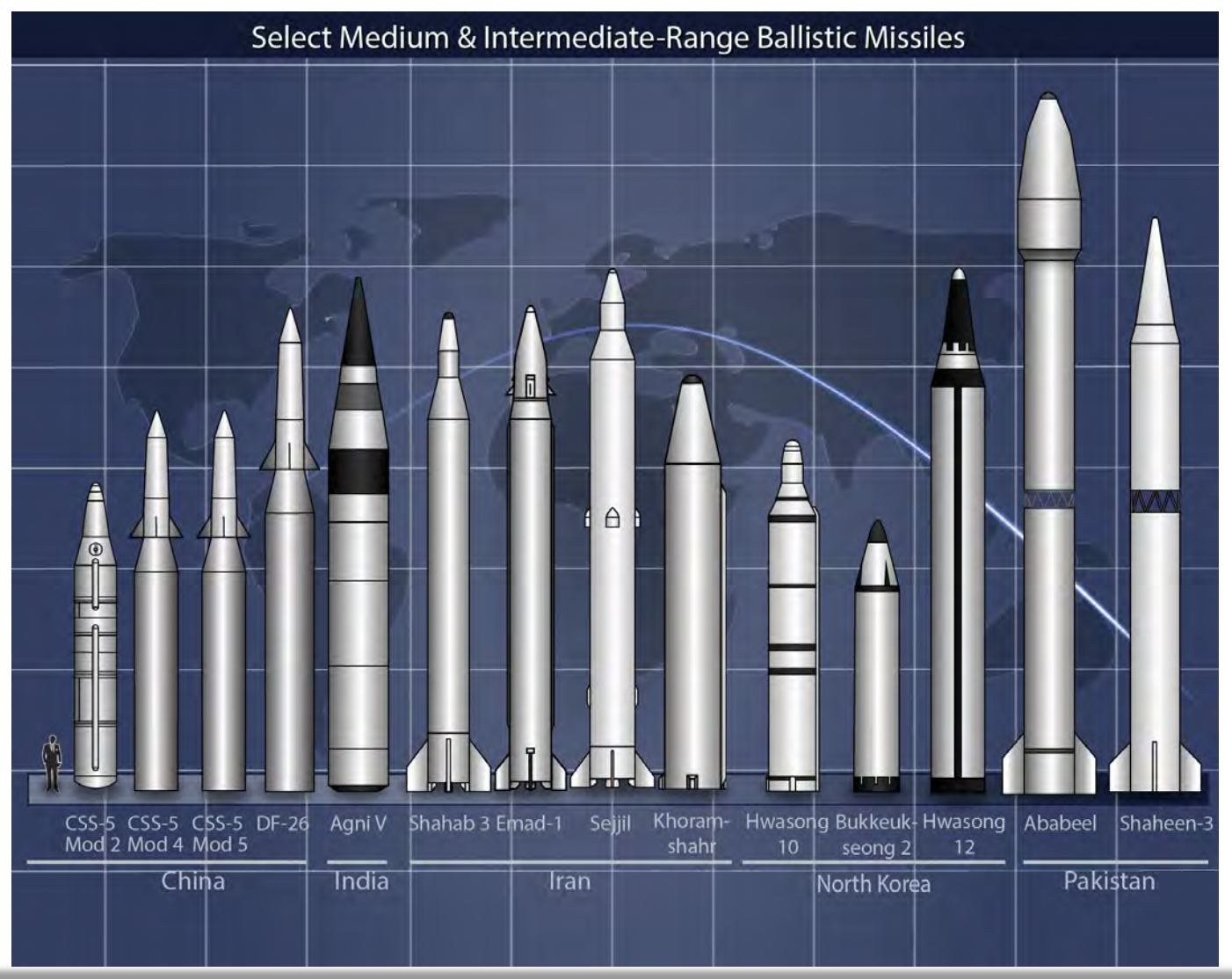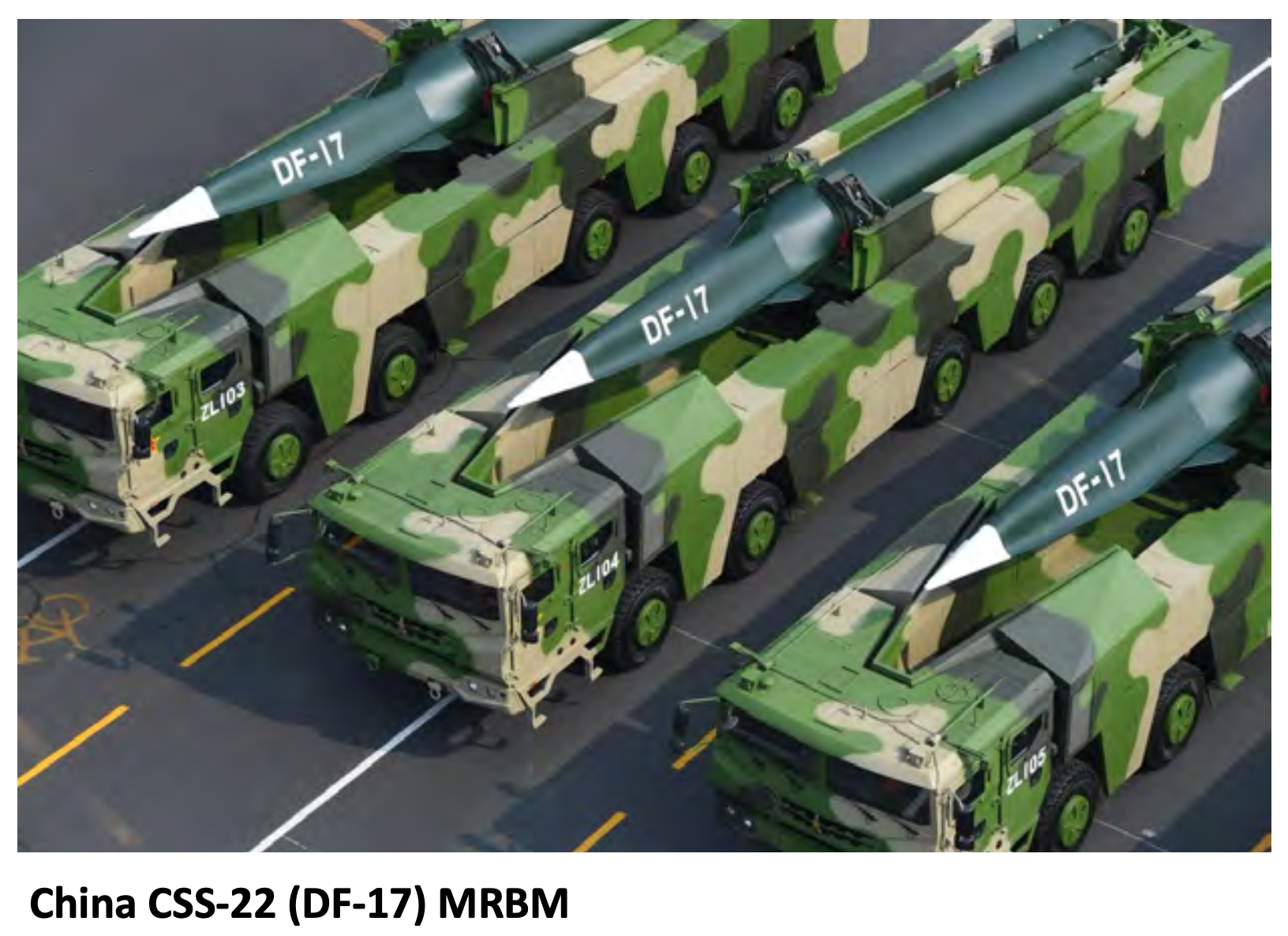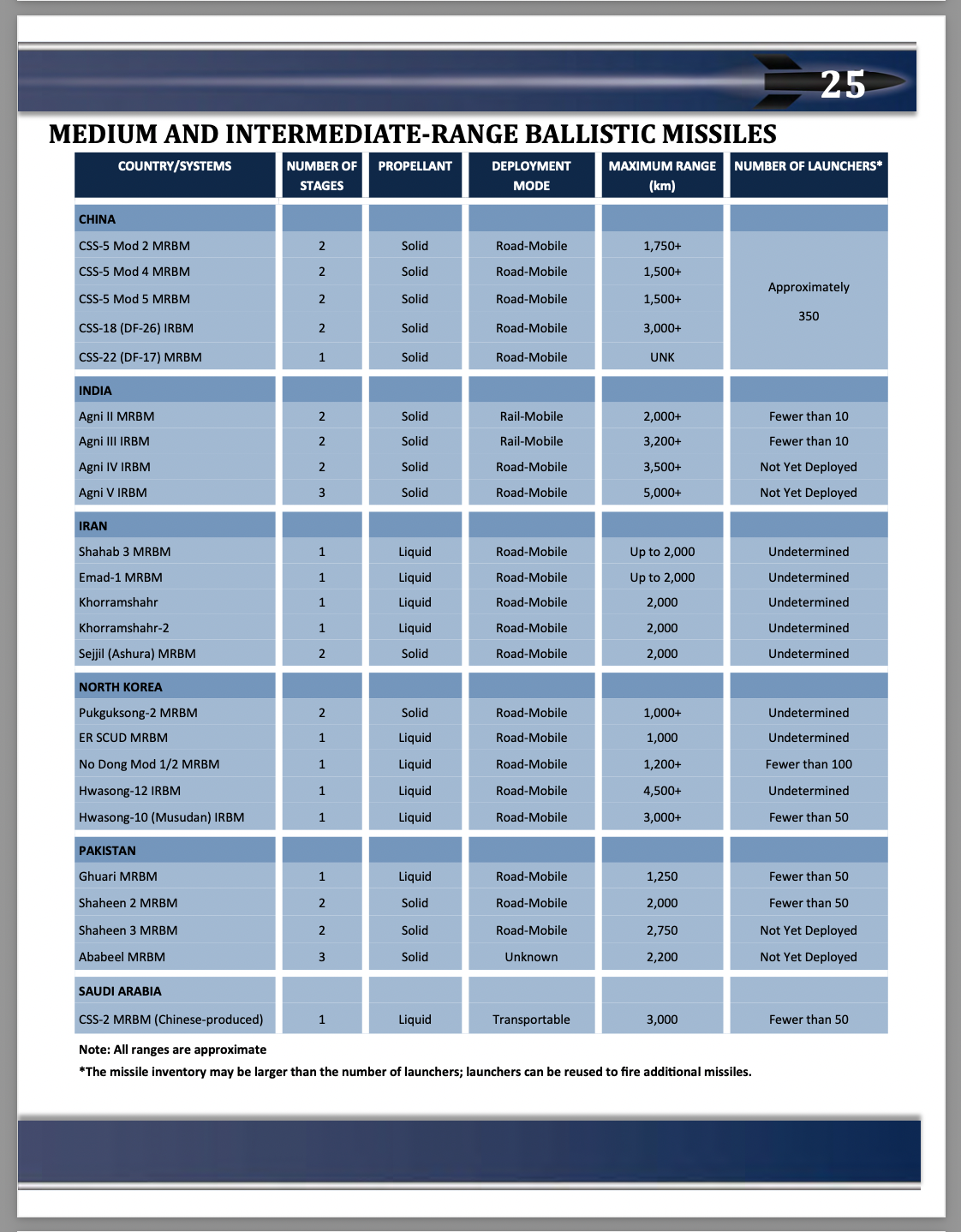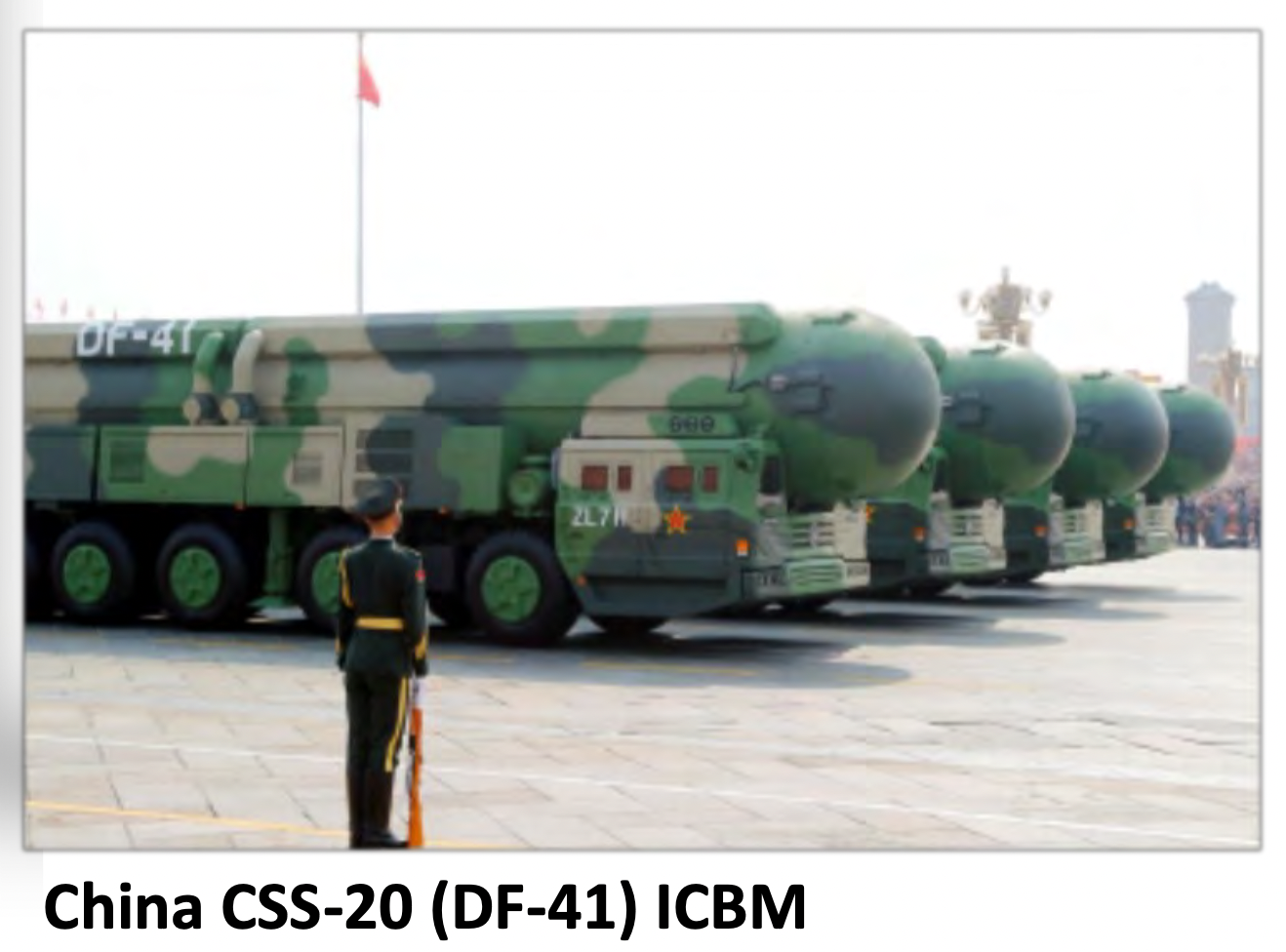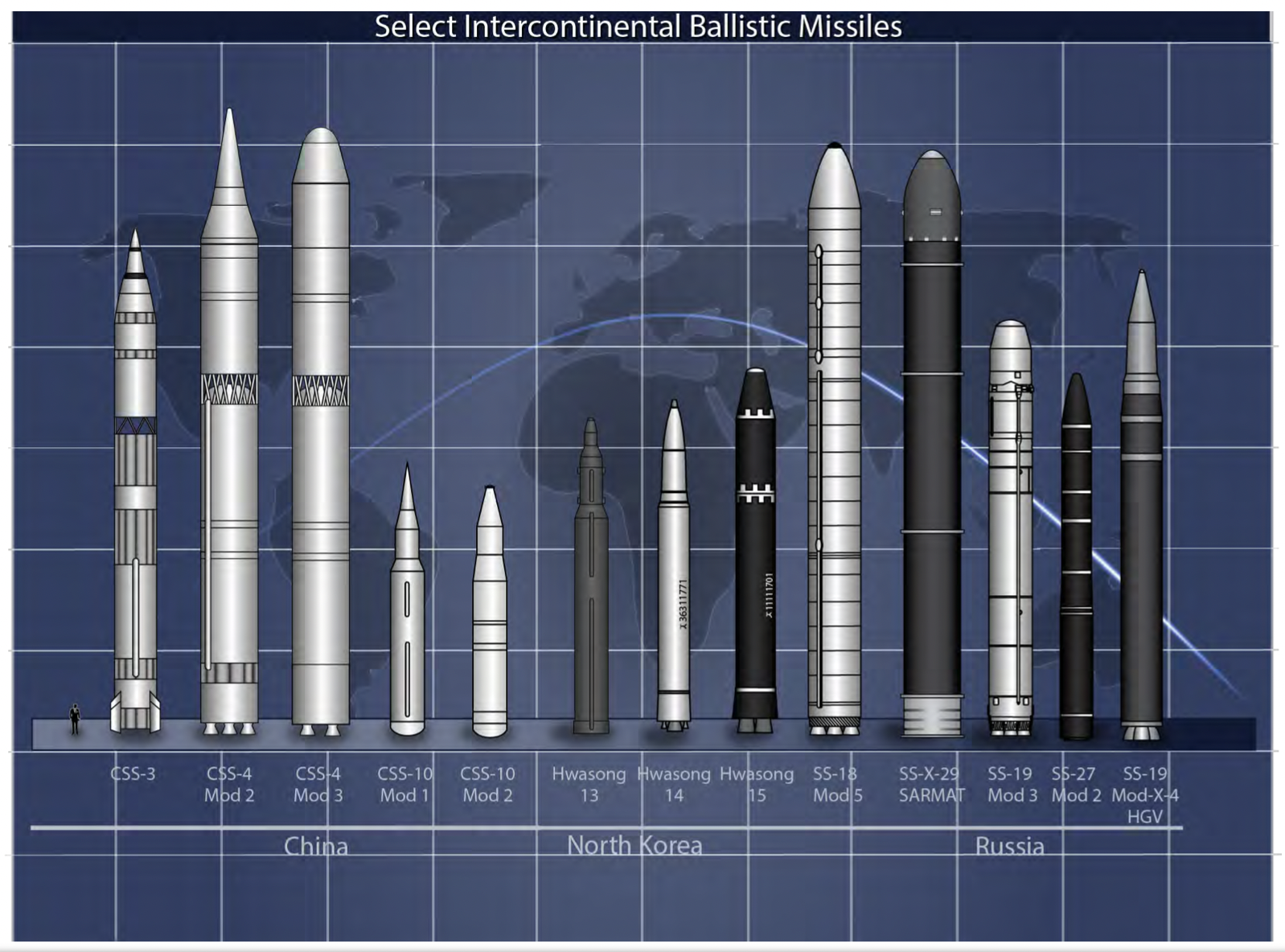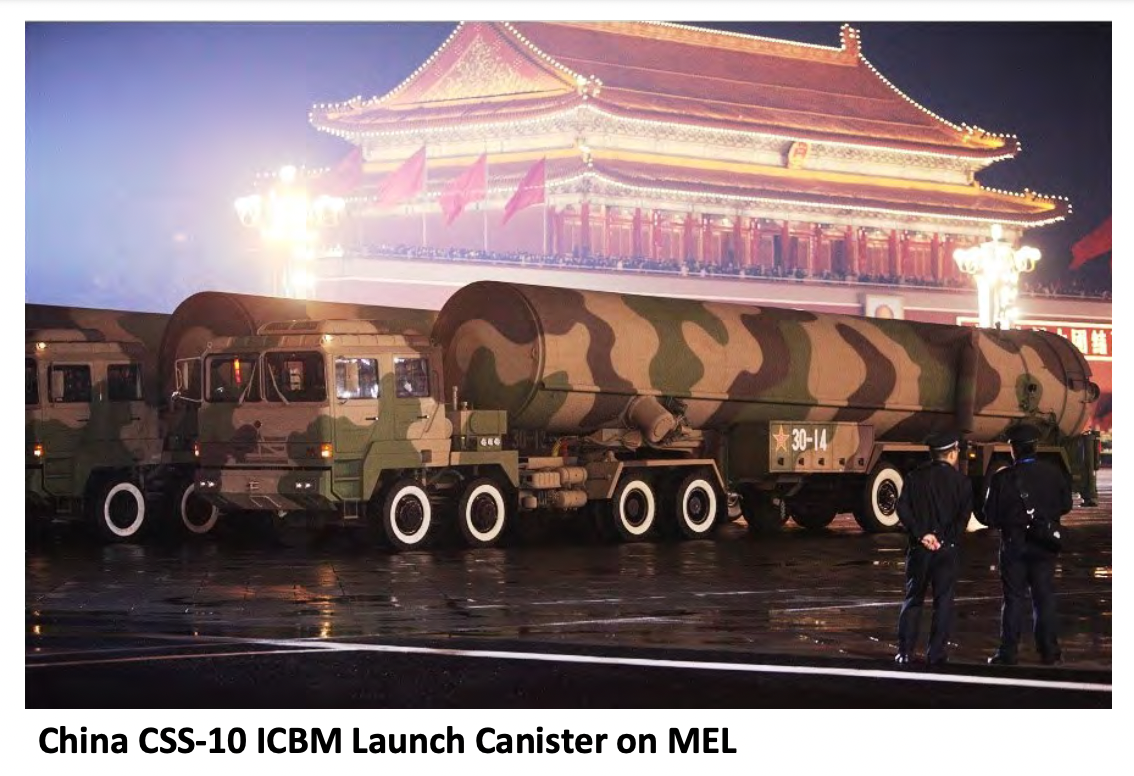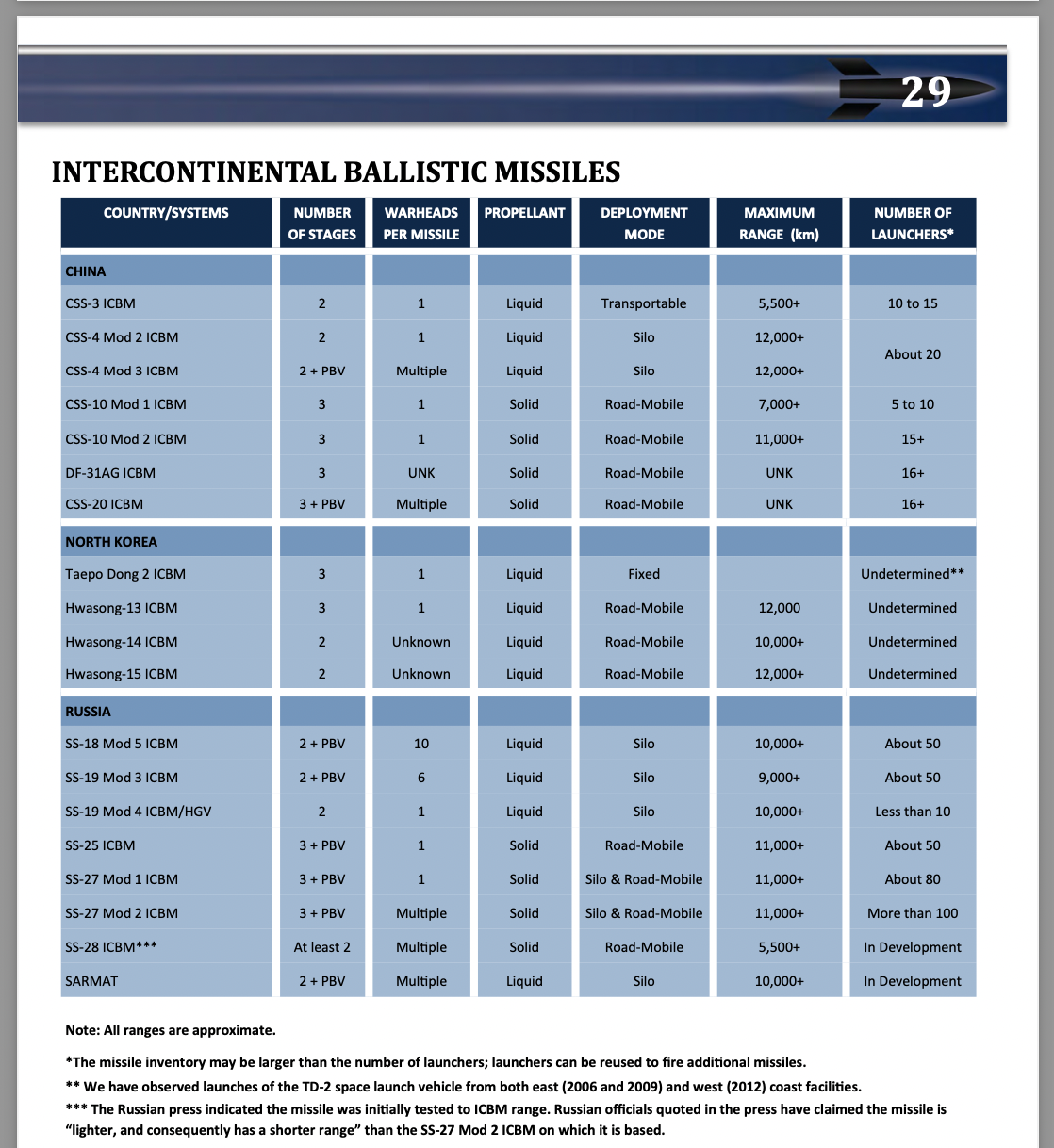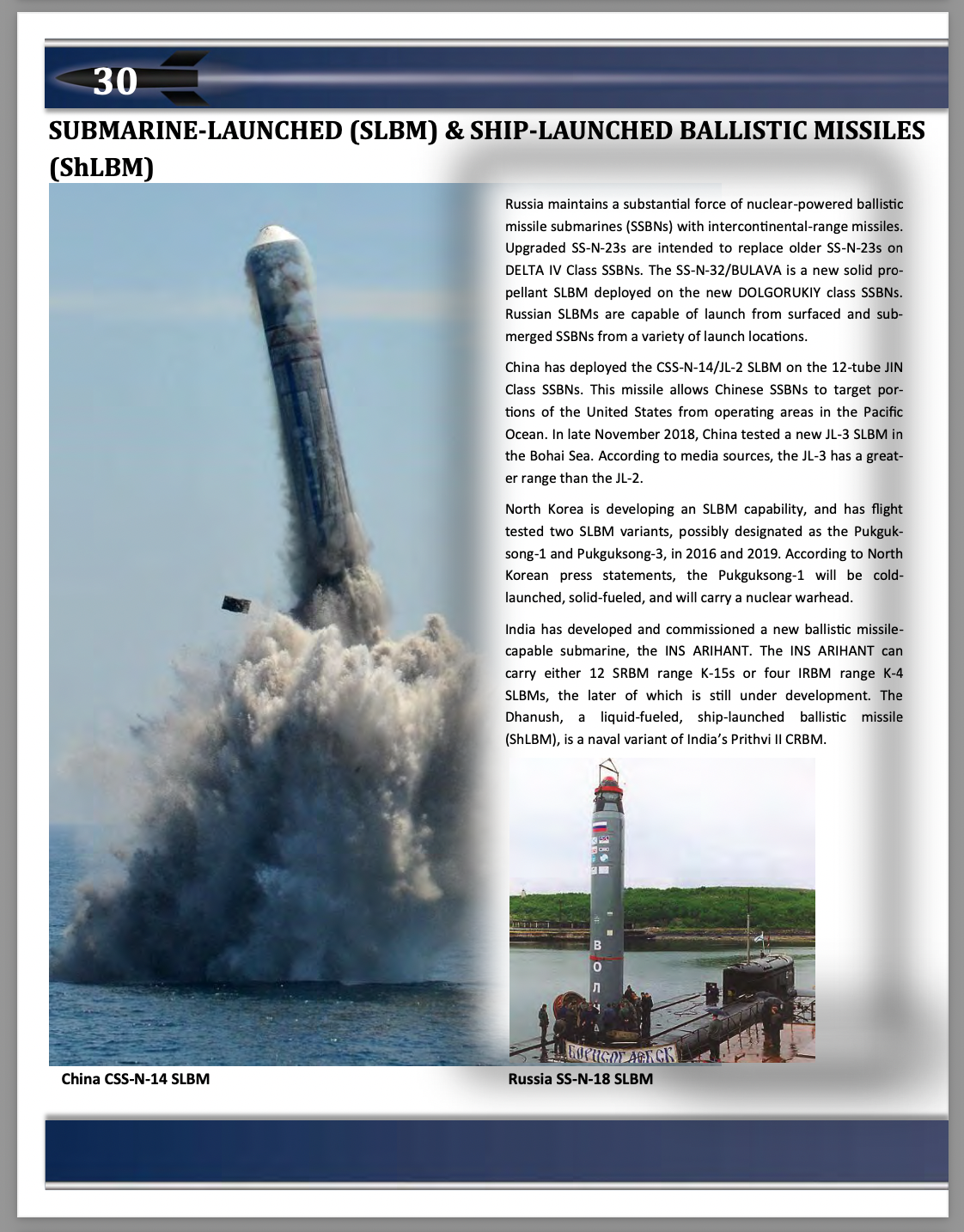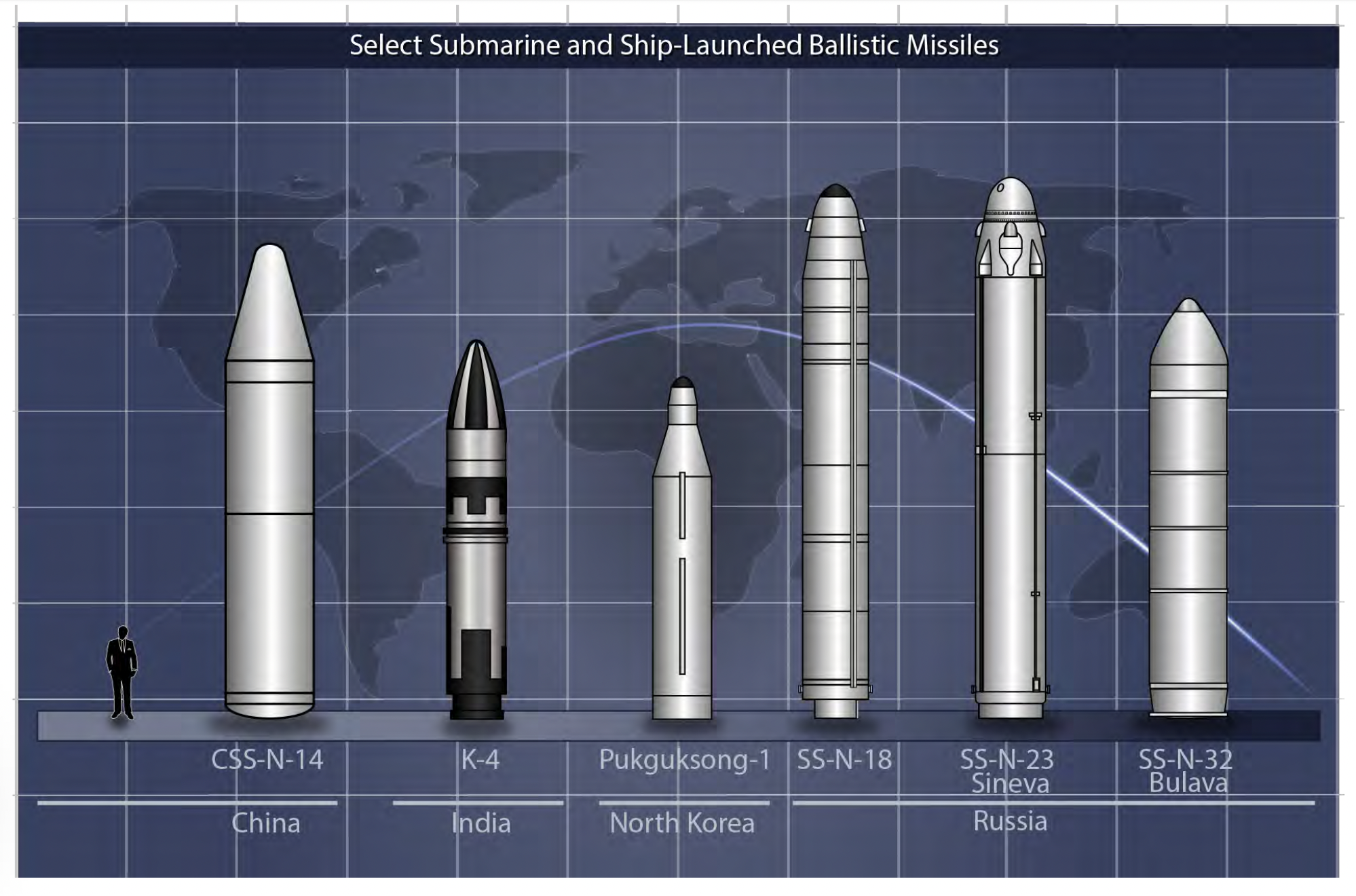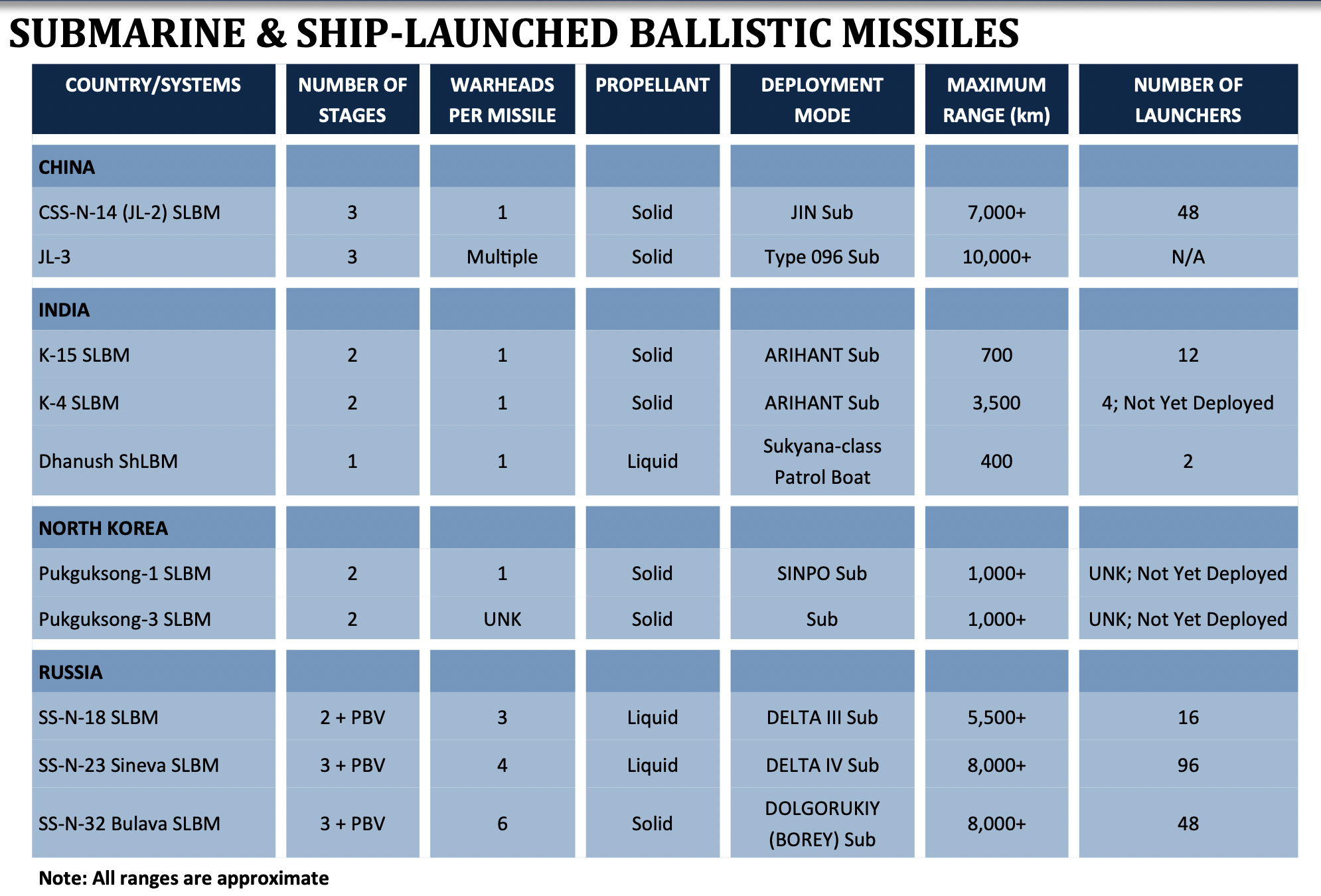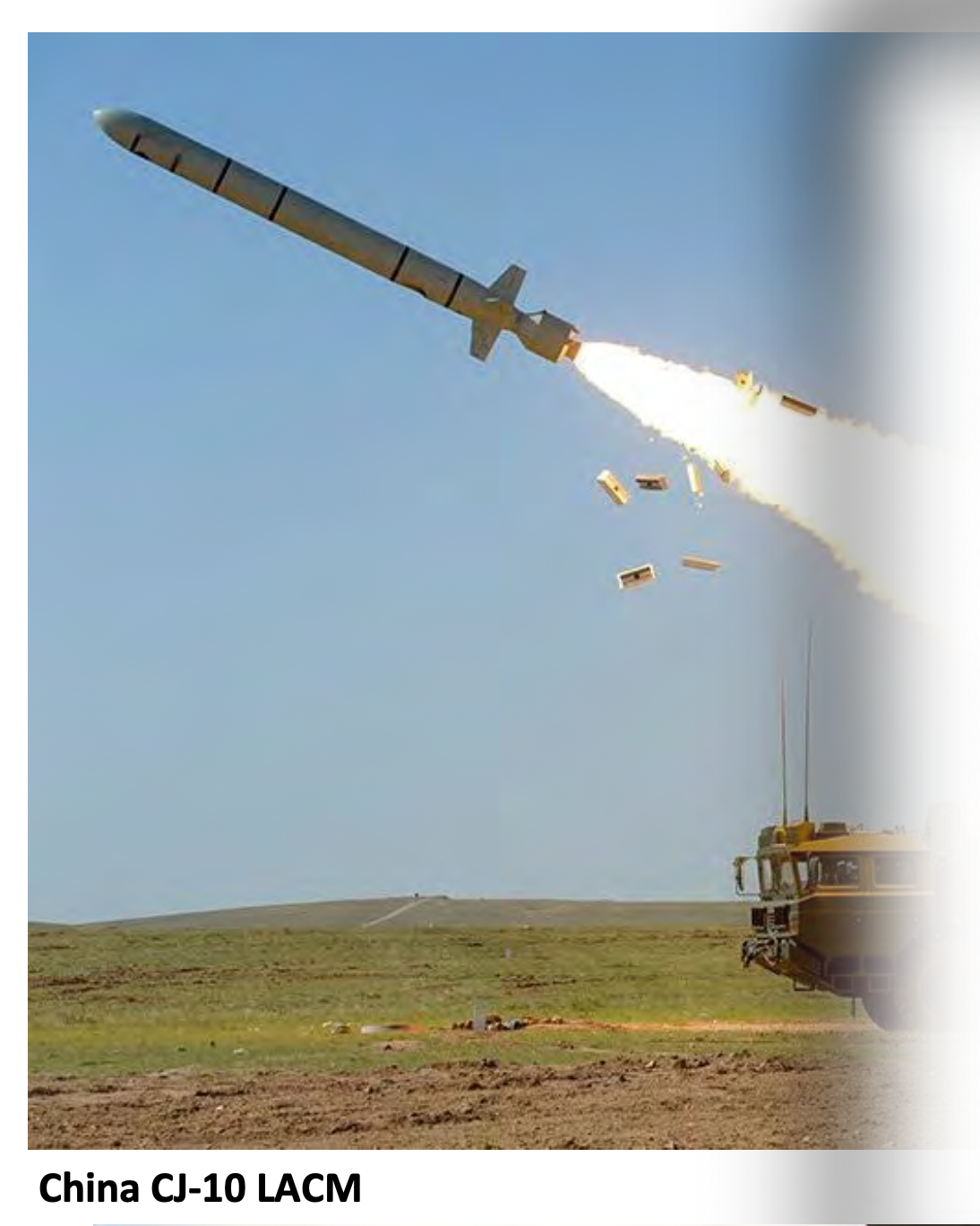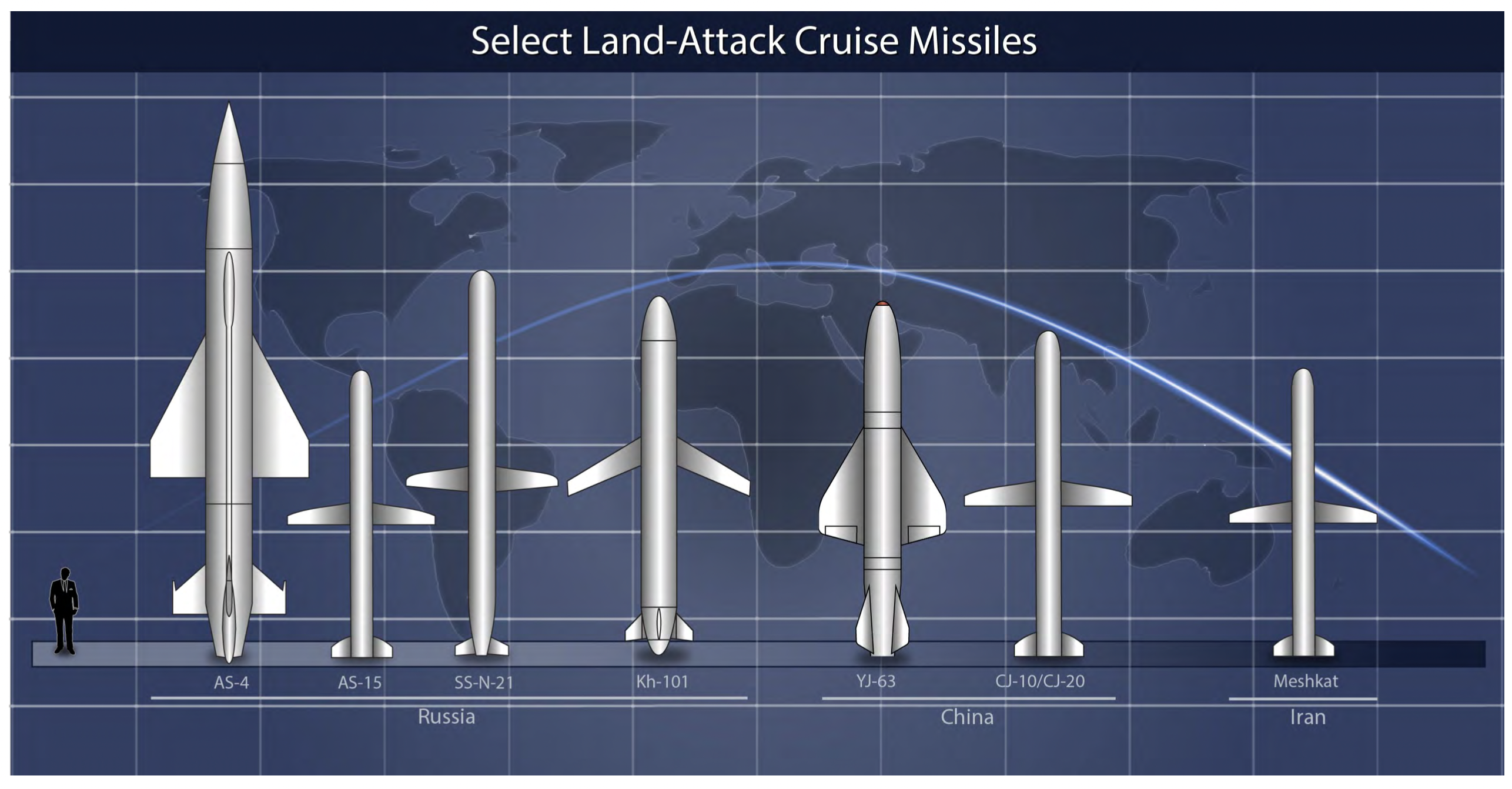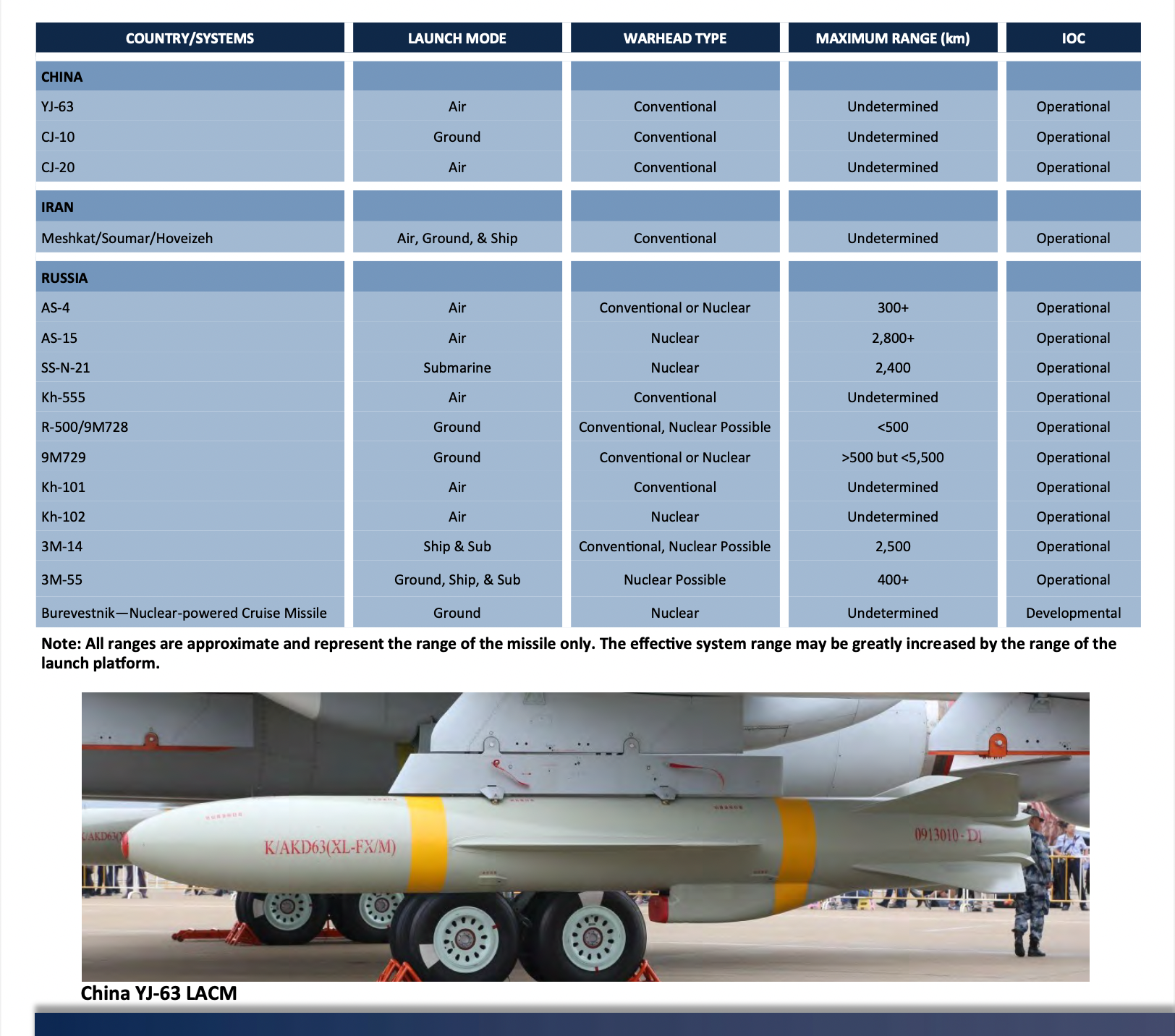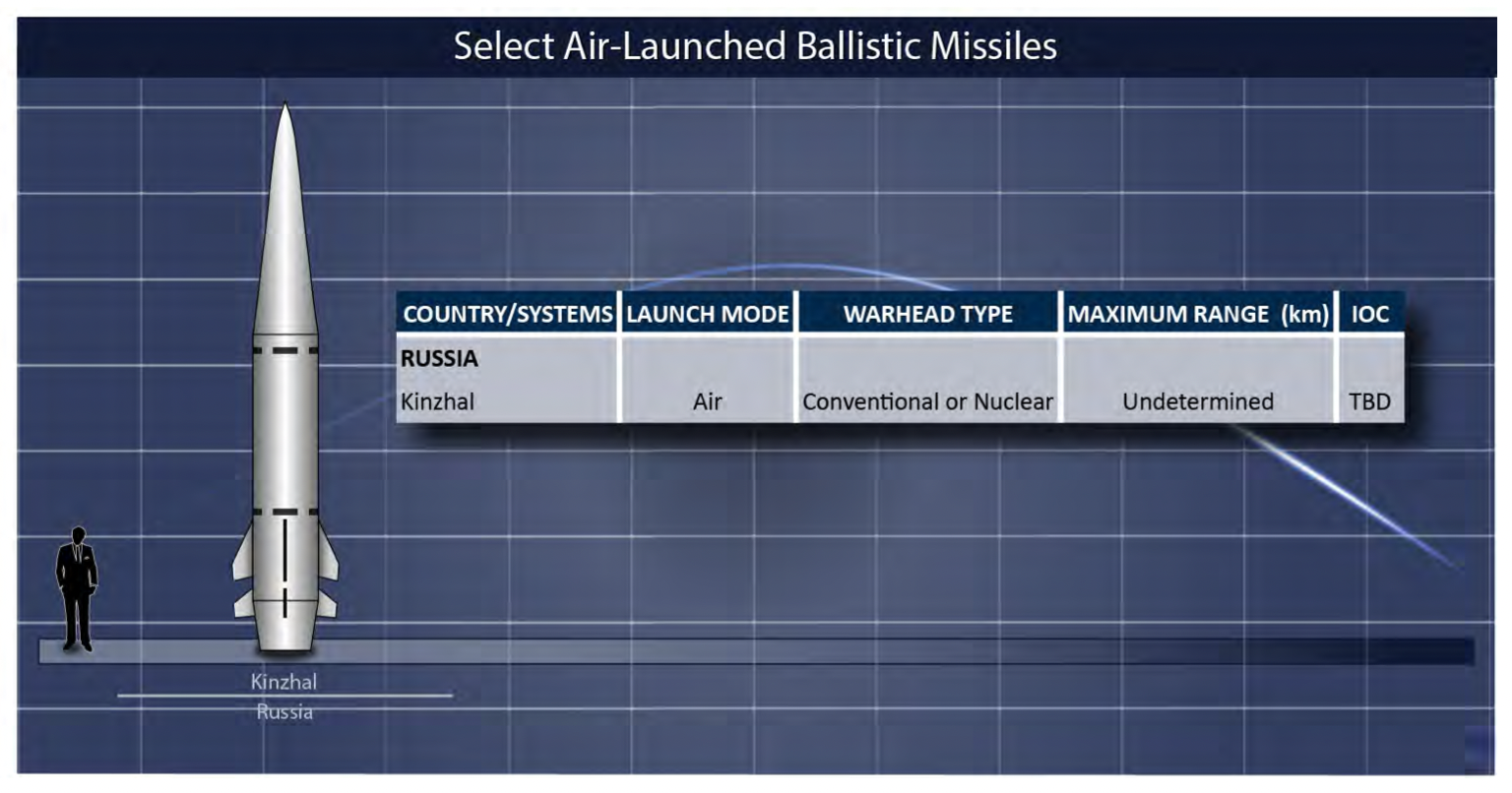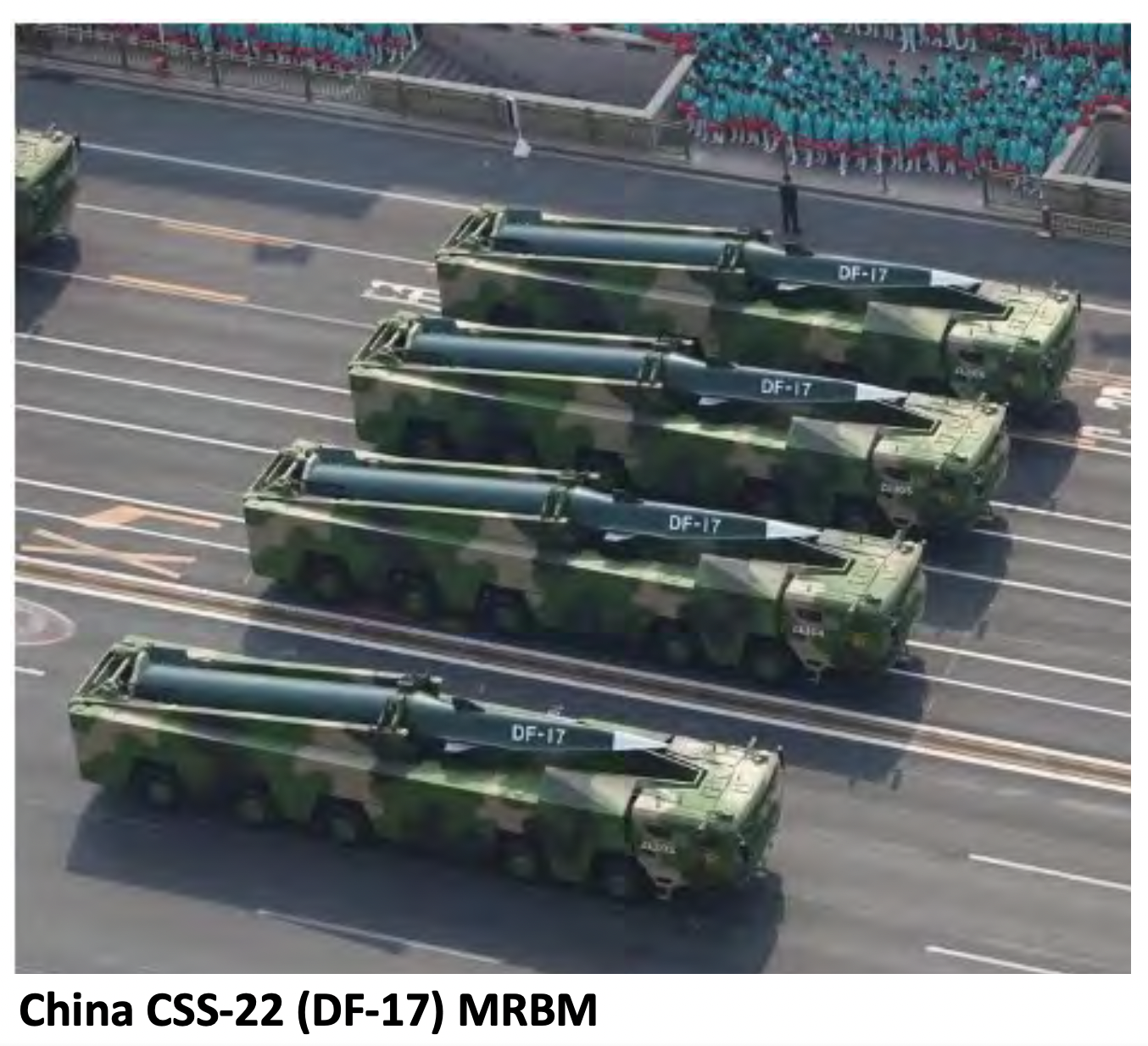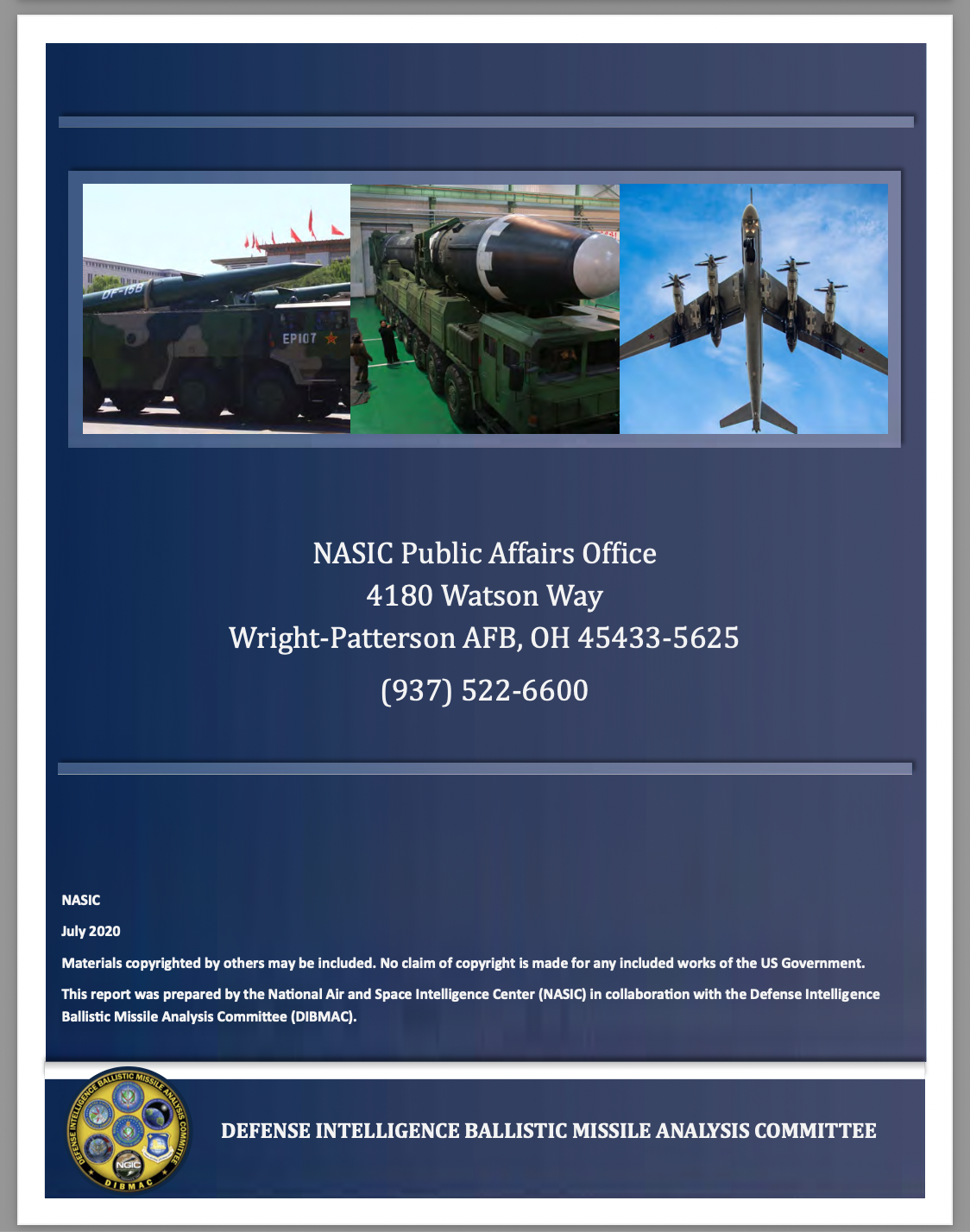ICYMI—Key China Content—NASIC’s “2020 Ballistic & Cruise Missile Threat” Report
The PRC already targets Taiwan and its vicinity with numerous ballistic and cruise missile systems!
China has three hypersonic test vehicles, which may support a future hypersonic cruise missile…
…and is developing two air-launched ballistic missiles (ALBMs), one possibly nuclear.
Check out the extensive graphics, tables & data offered here!
NASIC, DIBMAC release unclassified missile assessment
By NASIC Public Affairs / Published January 11, 2021
Related Document
2020 BALLISTIC AND CRUISE MISSILE THREAT
WRIGHT-PATTERSON AIR FORCE BASE — The National Air and Space Intelligence Center, on behalf of the Defense Intelligence Ballistic Missile Analysis Committee, recently released an unclassified report detailing foreign missile systems.
The “Ballistic and Cruise Missile Threat Report” provides a comprehensive, unclassified overview of foreign ballistic and cruise missiles, both of which present a significant threat to U.S. and allied forces overseas, and to the U.S. homeland and territories.
“With their relatively low operating costs, potential to penetrate defense systems, and value as a symbol of national power, ballistic and cruise missiles will continue to be the offensive weapons of choice for many nations,” says the report. “As such, they are threats that must be carefully considered in future military planning and operations.”
The 40-page report is updated and re-released by the DIBMAC every few years. The DIBMAC is comprised of representatives from NASIC, the Missile and Space Intelligence Center, the Office of Naval Intelligence, the National Ground Intelligence Center, United States Strategic Command and the National Geospatial-Intelligence Agency.
NASIC’s mission is to discover and characterize air, space, missile and cyber threats to enable full-spectrum multi-domain operations, drive weapon system acquisition, and inform national defense policy.
For more information contact NASIC Public Affairs at 937-257-7809.
2020 Ballistic & Cruise Missile Threat (Wright-Patterson AFB, Ohio: National Air & Space Intelligence Center, 2020).
Click here to download a cached copy.
p. 2
KEY FINDINGS
Many countries view ballistic and cruise missile systems as cost-effective weapons and symbols of national power, especially when those systems are armed with weapons of mass destruction. However, numerous types of ballistic and cruise missiles have achieved dramatic improvements in accuracy that allow them to be used effectively with conventional warheads. Some weapon systems have characteristics of both ballistic and cruise missiles. For example, ballistic missile-launched hypersonic glide vehicles (HGVs) can maneuver in the atmosphere similar to cruise missiles, and future supersonic/hypersonic cruise missiles may be launched by large rocket boosters. Highly accurate ballistic and cruise missiles can be used to deter or counter adversary forces deploying to or operating within a defined space or theater.
CHINA
China continues to have the most active and diverse ballistic missile development program in the world. It is developing and testing offensive missiles, forming additional missile units, upgrading missile systems, and developing methods to counter ballistic missile
p. 3
defenses. China’s deployed ballistic missile force, operated by the People’s Liberation Army (PLA) Navy and PLA Rocket Force (formerly known as Second Artillery), is expanding in both number and diversity of system. China continues to field conventionally-armed SRBMs such as the CSS-6 (DF-15) and the CSS-7 (DF-11) opposite Taiwan, and has developed a number of mobile, conventionally-armed MRBMs and IRBMs. Missiles such as the CSS-11 (DF-16), CSS-22 (DF-17), CSS-5 Mod 4 (DF-21C) and Mod 5 (DF-21D), and CSS-18 (DF-26) are key components of the Chinese military modernization program, specifically designed to prevent adversary military forces’ access to regional conflicts. The CSS-5 Mod 5 and a variant of the CSS-18 have anti-ship missions. China is also developing a shipborne anti–ship ballistic missile (ASBM) for export. China has ground and air-launched LACMs.
China’s nuclear-armed missile force is also expanding with the number of Chinese ICBM nuclear warheads capable of reaching the United States potentially expanding to well over 200 within the next 5 years. China is adding the CSS-10 Mod 2 (DF-31A) and CSS-4 Mod 3 (DF-5B) to the ICBM force; the DF- 5B is China’s first ICBM with multiple independently-targetable reentry vehicles (MIRVs). The CSS-N-14 SLBM gives China its first long-range, sea-based nuclear capability. China is also developing the CSS-20 (DF-41), a new MIRV-capable, road-mobile ICBM and the DF-31AG road-mobile ICBM. China attributed both nuclear and conventional missions to the CSS-18 displayed for the first time during the Victory Day Parade in September 2015.
p. 5
History of Notable Ballistic Missile Systems Development
p. 14
CLOSE-RANGE BALLISTIC MISSILES (CRBM)
States including Russia, China, North Korea, Pakistan, India, and Iran are likely pursuing increased accuracy, range, and lethality for their close-range ballistic missile systems. China is likely marketing and/or producing multiple CRBMs with a maximum range of just under 300 km and marketing the B611MR and WS-640 CRBMs, which are equipped with an anti-radiation homing seeker. CRBM variants currently in research and development (R&D) or in production worldwide are included in the chart on page 15.
China and Russia are producing and marketing CRBMs with various warheads. These warheads likely include dual-purpose improved conventional munition (DPICM), thermobaric, and high explosive
p. 15
warheads. The improved accuracy of CRBMs, as compared to unguided artillery rockets, increases the probability that the warhead blast-wave or the warhead’s fragments will reach the intended target and neutralize it.
Select[ed] Close-Range Ballistic Missiles
p. 16
p. 17
Close-Range Ballistic Missiles
p. 18
SHORT-RANGE BALLISTIC MISSILES (SRBM)
China has deployed a very large force of modern solid-propellant SRBMs in the vicinity of Taiwan.
p. 19
Select[ed] Short-Range Ballistic Missiles
p. 20
China CSS-11 Variants
p. 21
Short-Range Ballistic Missiles
p. 22
MEDIUM-(MRBM) & INTERMEDIATE-RANGE BALLISTIC MISSILES (IRBM)
China continues to deploy nuclear-armed MRBMs to maintain regional nuclear deterrence, and its long-term, comprehensive military modernization is improving the capability of its conventionally-armed ballistic missile force to conduct high-intensity regional military operations, including “anti-access and area denial” (A2/AD) operations. Currently, China deploys the CSS-5 Mod 2 for regional nuclear deterrence. China has the conventionally-armed CSS-5 Mod 4 and Mod 5 MRBMs to conduct precision strikes. The CSS-5 Mod 4 (DF-21C) is intended to hold at risk or strike logistics and communication nodes, regional military bases and airfields, or ports. China has also deployed the CSS -5 Mod 5 (DF-21D), an anti-ship ballistic missile (ASBM) with a range exceeding 1,500 km and a maneuverable reentry vehicle (MaRV) that gives the PLA the capability to attack aircraft carriers in the western Pacific Ocean. According to a Chinese CCTV report, the DF-21D brigades are capable of quickly reloading in the field and launching multiple salvo strikes within a few hours. During the PLA’s 90th Anniversary Parade in July 2017, China displayed a new MRBM designated the DF-16G, which China claims features high accuracy, short preparation time, and an improved maneuverable terminal stage that can better infiltrate missile defense systems. As part of its National Day Parade in October 2019 celebrating the 70th Anniversary of the Peoples’ Republic of China, China displayed its DF-17 medium-range hypersonic missile.
Official Chinese media commentary described the DF-26 IRBM as “one carrier, many warheads.” Chinese media has stated the DF-26 can carry a conventional or nuclear payload and that it can launch conventional medium and long-range precision strikes against important targets on land and large ships at sea. It also requires little support equipment and has fast reaction times, according to descriptions in official Chinese media outlets.
p. 23
Select[ed] Medium and Intermediate-Range Ballistic Missiles
p. 24
p. 25
Medium and Intermediate-Range Ballistic Missiles
p. 26
INTERCONTINENTAL BALLISTIC MISSILES (ICBM)
Both China and Russia currently deploy multiple types of ICBMs and are modernizing their ICBM forces. … …
China is strengthening its strategic nuclear deterrent force with the development and deployment of new ICBMs. China retains a relatively small number of nuclear-armed, liquid- propellant CSS-3 (DF-4) limited range ICBMs and CSS-4 (DF-5) ICBMs capable of reaching the United States.
China first displayed the CSS-4 Mod 3 (DF-5B) ICBM with a claimed MIRV payload in 2015. It is also modernizing its nuclear forces by adding more survivable, road-mobile
p. 27
delivery systems. The road-mobile, solid-propellant CSS-10 Mod 2 has been deployed to units within the PLA Rocket Force and will allow for targeting of most of the continental United States. China is developing the CSS-20 (DF-41), a new MIRV capable, road-mobile ICBM, and the DF-31AG road-mobile ICBM. The number of warheads on Chinese ICBMs capable of threatening the United States is expected to grow to well over 100 in the next 5 years.
Select[ed] Intercontinental Ballistic Missiles
p. 28
p. 29
Intercontinental Ballistic Missiles
p. 30
SUBMARINE-LAUNCHED (SLBM) & SHIP-LAUNCHED BALLISTIC MISSILES (ShLBM)
China has deployed the CSS-N-14/JL-2 SLBM on the 12-tube JIN Class SSBNs. This missile allows Chinese SSBNs to target portions of the United States from operating areas in the Pacific Ocean. In late November 2018, China tested a new JL-3 SLBM in the Bohai Sea. According to media sources, the JL-3 has a greater range than the JL-2.
p. 31
Select[ed] Submarine & Ship-Launched Ballistic Missiles
p. 33
Submarine & Ship-Launched Ballistic Missiles
p. 34
LAND-ATTACK CRUISE MISSILES (LACM)
p. 35
The CJ-10 is the first Chinese long-range cruise missile. It made its public debut during a military parade in 2009 and is currently deployed with the PLA Rocket Force. China has also developed a similar missile called CJ-20 that is carried on PLA Air Force bombers. China has also shown three hypersonic test vehicles that could help develop the technology to be able to field a hypersonic cruise missile in the future.
Select[ed] Land-Attack Cruise Missiles
p. 36
p. 37
AIR-LAUNCHED BALLISTIC MISSILES (ALBM)
China is also developing two air-launched ballistic missiles, one of which may have a nuclear warhead.
Select[ed] Air-Launched Ballistic Missiles
p. 38
SUMMARY
Overall, the threats posed by ballistic missile delivery systems are likely to continue to increase and grow more complex. Adversary ballistic missile systems are becoming more mobile, survivable, reliable, and accurate while also achieving longer ranges. Hypersonic glide vehicles (HGVs) delivered by ballistic missile boosters are an emerging threat that will pose new challenges to missile defense systems. Prelaunch survivability is likely to increase as potential adversaries strengthen their denial and deception measures and increasingly base missiles on mobile platforms. Increasing technical and operational countermeasures continue to challenge defensive systems in ballistic missiles.
p. 39
China is producing technologically-advanced ballistic missiles, has sold ballistic missile technology to other countries, has deployed a large force of ballistic missiles in the vicinity of Taiwan, and is expanding the reach of its ballistic missiles to attempt to deter foreign powers from becoming involved in any future regional conflict. China can already target the United States with a relatively small force of ICBMs, and its ICBM force is growing quantitatively and qualitatively.

